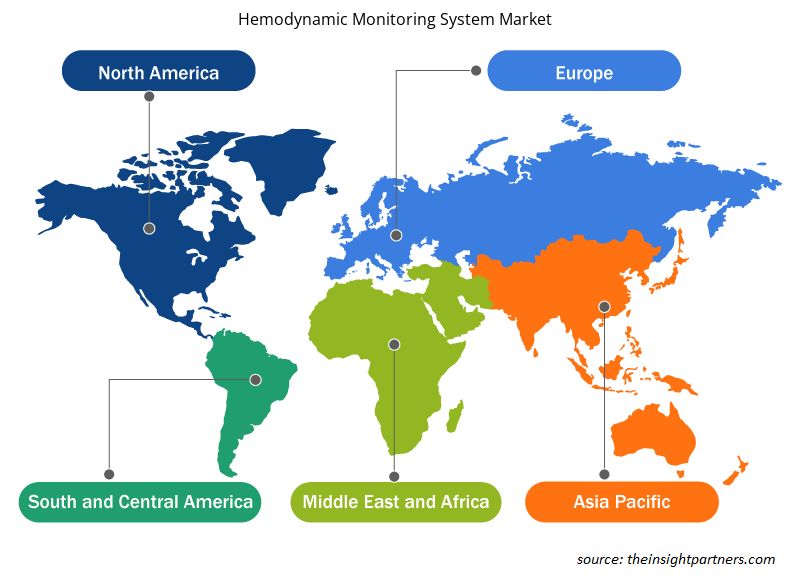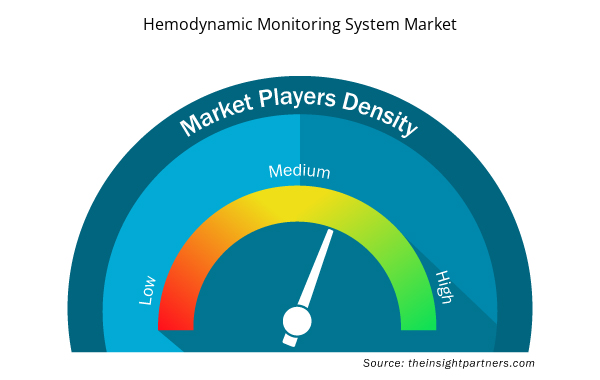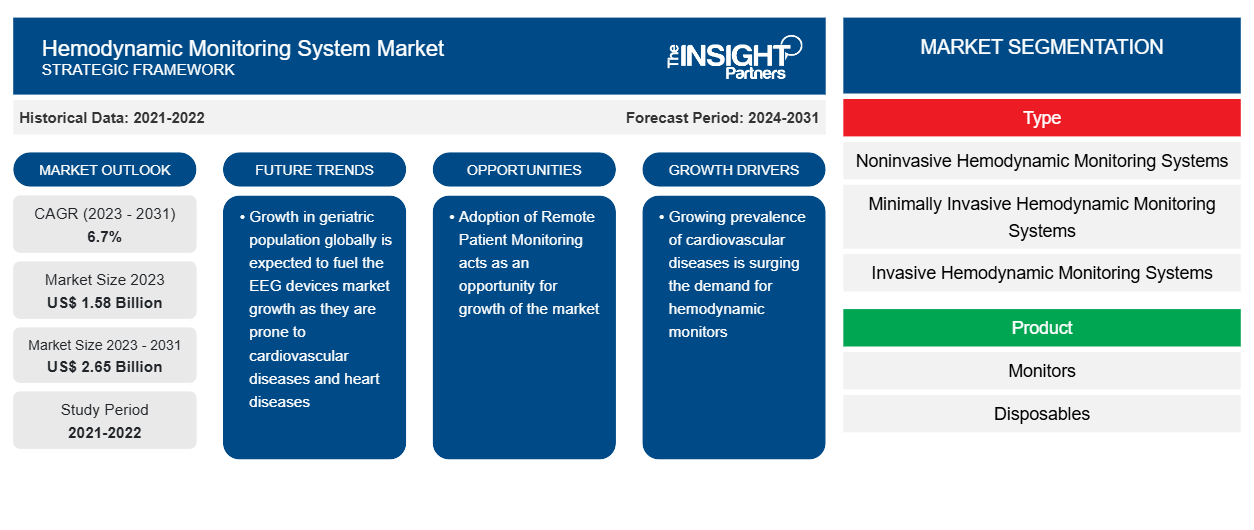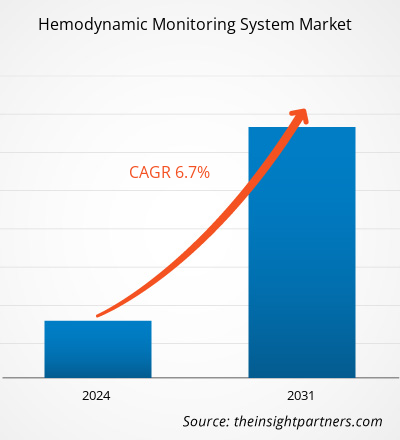血行動態モニタリングシステムの市場規模は、2023年の15億8,000万米ドルから2031年には26億5,000万米ドルに達すると予測されています。市場は2023年から2031年の間に6.7%のCAGRを記録すると予想されています。人工知能と機械学習の使用は、市場の主要なトレンドであり続けると思われます。
血行動態モニタリングシステム市場分析
血行動態モニタリング システムは、患者の血液循環をモニタリングし、心臓の健康状態を評価するために使用されます。したがって、高齢者人口の増加と小児の心臓病の検出による心臓関連疾患の罹患率の増加は、血行動態モニタリング システムの需要を促進しています。さらに、血行動態モニタリング システムの研究開発への投資の増加、心臓の健康に対する意識向上の取り組み、患者の安全性とケアの質への注目の高まりが、血行動態モニタリング システム市場の成長を牽引しています。さらに、集中治療室、救急科、手術室でのクリティカル ケア モニタリングの需要の高まりも、市場の成長を促進しています。在宅医療サービスと遠隔患者モニタリング プログラムの拡大は、予測期間中の市場成長の機会として機能します。
血行動態モニタリングシステム市場の概要
地理的に見ると、アジア太平洋地域は2023~2031年の予測期間に最高のCAGRを記録すると予想されています。アジア太平洋地域での技術的に高度な製品の導入に対する市場プレーヤーの注目度の高まり、在宅医療サービスの採用の増加、非侵襲的診断技術の需要の増加、研究開発活動の増加が、アジア太平洋地域の血行動態モニタリングシステム市場の成長を後押ししています。さらに、老年人口の増加、医療費の増加、心血管疾患(CVDS)の罹患率の増加、心臓の健康に関する意識を高めるための政府支援の改善が、アジア太平洋地域の市場の成長を後押ししています。
要件に合わせてレポートをカスタマイズする
このレポートの一部、国レベルの分析、Excelデータパックなど、あらゆるレポートを無料でカスタマイズできます。また、スタートアップや大学向けのお得なオファーや割引もご利用いただけます。
- このレポートの主要な市場動向を入手してください。この無料サンプルには、市場動向から見積もりや予測に至るまでのデータ分析が含まれます。
血行動態モニタリングシステム市場の推進要因と機会
心血管疾患の罹患率増加が市場を有利に導く
心血管疾患(CVD)は、世界中で毎年何百万人もの死因となっています。2022年心臓病および脳卒中統計更新ファクトシート「世界の疾病負担」によると、2020年には推定1億1,910万人がCVDで亡くなりました。また、2020年の脳卒中と虚血性脳卒中の世界の有病率は、それぞれ8,910万人と6,820万人でした。CVDの主な原因は、高血圧、肥満、糖尿病です。世界保健機関(WHO)によると、毎年約1,790万人がCVDで命を落としており、これは世界で報告されている死亡者の約32%に相当します。欧米諸国ではCPRに関する認識が高くなっています。米国疾病管理予防センター(CDC)によると、米国では毎年約35万件の院外心停止(OHCA )が発生しています。血行動態モニターは、心臓病患者の心臓機能と血液循環の測定を可能にします。このモニタリングにより、医師は静脈、動脈、心臓の内部から血圧を測定できます。したがって、CVDの罹患率の増加により、血行動態モニターの需要が急増しています。
遠隔患者モニタリングの導入は市場成長の機会となる
患者のバイタルを遠隔でモニタリングすることで、医療従事者は医療施設への入院を避けることができます。症例を仮想的に処理できる場合、ベッドは重篤な治療を必要とする患者専用に確保されるため、病院管理者はリソースをより効率的に管理できます。長期施設、入院リハビリテーション、熟練看護施設から在宅ケア環境への移行により、クラウドおよびモビリティ主導の医療機器の台頭により、患者と医師の間でより良く、一貫性があり、タイムリーなやり取りが行われる可能性が高まります。デバイスを電子医療記録 ( EMR ) と統合して結果をリアルタイムで分析することで、遠隔患者モニタリングの採用が増え、血行動態モニターの成長の機会が生まれます。
血行動態モニタリングシステム市場レポートのセグメンテーション分析
血行動態モニタリング システム市場分析の導出に貢献した主要なセグメントは、製品、タイプ、およびエンド ユーザーです。
- タイプに基づいて、血行動態モニタリングシステム市場は、非侵襲性血行動態モニタリングシステム、低侵襲性血行動態モニタリングシステム、および侵襲性血行動態モニタリングシステムに分かれています。非侵襲性血行動態モニタリングシステムセグメントは、非侵襲性心臓システムとその他にさらに分かれています。侵襲性血行動態モニタリングシステムセグメントは、2023年に最大の市場シェアを占めました。
- 製品別に見ると、市場はモニターと使い捨て製品に分かれています。使い捨て製品セグメントは2023年に市場で大きなシェアを占めました。
- エンドユーザーに基づいて、血行動態モニタリング システム市場は、病院、カテーテル検査室、在宅ケア、外来手術センターに分かれています。病院セグメントは 2023 年に最大の市場シェアを占めました。
血行動態モニタリング システム市場シェアの地域別分析
血行動態モニタリング システム市場レポートの地理的範囲は、主に北米、アジア太平洋、ヨーロッパ、中東およびアフリカ、南米および中米の 5 つの地域に分かれています。
北米が市場を支配しています。北米の血行動態モニタリングシステム市場の予測される成長は、医療費の増加、心血管疾患の有病率の上昇、心臓の健康に関する意識の高まり、老年人口の増加などの要因に起因しています。米国ではCVDの有病率がはるかに高く、人口の50%以上がさまざまな種類のCVDに苦しんでいます。米国疾病管理予防センター(CDC)によると、毎年60万人以上がCVDで亡くなっており、これは死亡者の4人に1人近くを占めています。人々のCVDの主な原因は、高血圧、肥満、糖尿病です。さらに、さまざまな組織が、CVDのケアと治療のためのプログラムの導入と、メキシコでのこれらの治療に関する意識向上に注力しています。たとえば、2022年6月、アメリカ心臓協会は、CVDのケアの一貫性を向上させるために、ノバルティスメキシコの資金提供を受けた2年間のプログラムを開始しました。
血行動態モニタリング システム市場の地域別分析
予測期間を通じて血行動態モニタリング システム市場に影響を与える地域的な傾向と要因は、Insight Partners のアナリストによって徹底的に説明されています。このセクションでは、北米、ヨーロッパ、アジア太平洋、中東、アフリカ、南米、中米にわたる血行動態モニタリング システム市場のセグメントと地域についても説明します。

- 血行動態モニタリングシステム市場の地域別データを入手
血行動態モニタリングシステム市場レポートの範囲
| レポート属性 | 詳細 |
|---|---|
| 2023年の市場規模 | 15億8千万米ドル |
| 2031年までの市場規模 | 26億5千万米ドル |
| 世界のCAGR(2023年~2031年) | 6.7% |
| 履歴データ | 2021-2022 |
| 予測期間 | 2024-2031 |
| 対象セグメント | タイプ別
|
| 対象地域と国 | 北米
|
| 市場リーダーと主要企業プロフィール |
|
血行動態モニタリングシステム市場のプレーヤー密度:ビジネスダイナミクスへの影響を理解する
血行動態モニタリング システム市場は、消費者の嗜好の変化、技術の進歩、製品の利点に対する認識の高まりなどの要因により、エンド ユーザーの需要が高まり、急速に成長しています。需要が高まるにつれて、企業は提供内容を拡大し、消費者のニーズを満たすために革新し、新たなトレンドを活用し、市場の成長をさらに促進しています。
市場プレーヤー密度とは、特定の市場または業界内で活動している企業または会社の分布を指します。これは、特定の市場スペースに、その規模または総市場価値と比較して、どれだけの競合相手 (市場プレーヤー) が存在するかを示します。
血行動態モニタリングシステム市場で事業を展開している主要企業は次のとおりです。
- フィリップスNV
- オシプカメディカル株式会社
- ゼネラル・エレクトリック
- エドワーズライフサイエンス株式会社
- シュワルツァー カーディオテック
- ゲティンゲグループ
免責事項:上記の企業は、特定の順序でランク付けされていません。

- 血行動態モニタリングシステム市場のトップキープレーヤーの概要を入手
血行動態モニタリングシステム市場のニュースと最近の動向
血行動態モニタリング システム市場は、主要な企業出版物、協会データ、データベースなど、一次調査と二次調査後の定性的および定量的データを収集することによって評価されます。血行動態モニタリング システム市場におけるいくつかの開発を以下に示します。
- Mindray Medical は Edwards Lifesciences と提携し、2022 年に中国で発売された後、欧州市場で Mindray の主力製品である BeneVision N シリーズ患者モニターに血行動態モニタリング用の Edwards FloTrac センサーを統合しました。(出典: Mindray、企業 Web サイト、2023 年 6 月)
- ロイヤル フィリップスは、インターベンショナル ヘモダイナミック システムと市場をリードするポータブル患者モニター IntelliVue X3 を統合し、カテーテル ラボのテーブルサイドで高度な血行動態 (血流) 測定と、患者の治療過程全体にわたる主要なバイタル サインの継続的なモニタリングを実現しました。(出典: フィリップス、企業 Web サイト、2021 年 5 月)
血行動態モニタリングシステム市場レポートの対象範囲と成果物
「血行動態モニタリングシステム市場規模と予測(2021〜2031年)」レポートでは、以下の分野をカバーする市場の詳細な分析を提供しています。
- 対象範囲に含まれるすべての主要市場セグメントについて、世界、地域、国レベルでの血行動態モニタリングシステムの市場規模と予測
- 血行動態モニタリングシステムの市場動向、および推進要因、制約、主要な機会などの市場動向
- 詳細なPEST/ポーターの5つの力とSWOT分析
- 主要な市場動向、世界および地域の枠組み、主要プレーヤー、規制、最近の市場動向を網羅した血行動態モニタリングシステム市場分析
- 市場集中、ヒートマップ分析、主要プレーヤー、血行動態モニタリングシステム市場の最近の動向を網羅した業界展望と競争分析
- 詳細な企業プロフィール
- 過去2年間の分析、基準年、CAGRによる予測(7年間)
- PEST分析とSWOT分析
- 市場規模価値/数量 - 世界、地域、国
- 業界と競争環境
- Excel データセット


- Rare Neurological Disease Treatment Market
- Cosmetic Bioactive Ingredients Market
- Batter and Breader Premixes Market
- Automotive Fabric Market
- Aesthetic Medical Devices Market
- Parking Management Market
- Oxy-fuel Combustion Technology Market
- Drain Cleaning Equipment Market
- Glycomics Market
- Digital Language Learning Market

Report Coverage
Revenue forecast, Company Analysis, Industry landscape, Growth factors, and Trends

Segment Covered
This text is related
to segments covered.

Regional Scope
North America, Europe, Asia Pacific, Middle East & Africa, South & Central America

Country Scope
This text is related
to country scope.
よくある質問
North America dominated the hemodynamic monitoring system market in 2023.
Growing incidences of cardiovascular diseases, rising demand for critical care monitoring, and significantly rising elderly population are among the most influential factors responsible for the market growth.
Use of artificial intelligence and machine learning are likely to remain key trends in the hemodynamic monitoring system market.
Koninklijke Philips NV, Osypka Medical GmbH, General Electric Co, Edwards Lifesciences Corporation, Schwarzer Cardiotek, Getinge Group, Deltex Medical, ICU MEDICAL INC., Masimo, and Baxter International Inc. are among the key players operating in the market.
The hemodynamic monitoring system market is estimated to reach US$ 2.65 billion in 2031.
The hemodynamic monitoring system market is anticipated to record a CAGR of 6.7% during 2023–2031.
Trends and growth analysis reports related to Life Sciences : READ MORE..
The Insight Partners performs research in 4 major stages: Data Collection & Secondary Research, Primary Research, Data Analysis and Data Triangulation & Final Review.
- Data Collection and Secondary Research:
As a market research and consulting firm operating from a decade, we have published and advised several client across the globe. First step for any study will start with an assessment of currently available data and insights from existing reports. Further, historical and current market information is collected from Investor Presentations, Annual Reports, SEC Filings, etc., and other information related to company’s performance and market positioning are gathered from Paid Databases (Factiva, Hoovers, and Reuters) and various other publications available in public domain.
Several associations trade associates, technical forums, institutes, societies and organization are accessed to gain technical as well as market related insights through their publications such as research papers, blogs and press releases related to the studies are referred to get cues about the market. Further, white papers, journals, magazines, and other news articles published in last 3 years are scrutinized and analyzed to understand the current market trends.
- Primary Research:
The primarily interview analysis comprise of data obtained from industry participants interview and answers to survey questions gathered by in-house primary team.
For primary research, interviews are conducted with industry experts/CEOs/Marketing Managers/VPs/Subject Matter Experts from both demand and supply side to get a 360-degree view of the market. The primary team conducts several interviews based on the complexity of the markets to understand the various market trends and dynamics which makes research more credible and precise.
A typical research interview fulfils the following functions:
- Provides first-hand information on the market size, market trends, growth trends, competitive landscape, and outlook
- Validates and strengthens in-house secondary research findings
- Develops the analysis team’s expertise and market understanding
Primary research involves email interactions and telephone interviews for each market, category, segment, and sub-segment across geographies. The participants who typically take part in such a process include, but are not limited to:
- Industry participants: VPs, business development managers, market intelligence managers and national sales managers
- Outside experts: Valuation experts, research analysts and key opinion leaders specializing in the electronics and semiconductor industry.
Below is the breakup of our primary respondents by company, designation, and region:

Once we receive the confirmation from primary research sources or primary respondents, we finalize the base year market estimation and forecast the data as per the macroeconomic and microeconomic factors assessed during data collection.
- Data Analysis:
Once data is validated through both secondary as well as primary respondents, we finalize the market estimations by hypothesis formulation and factor analysis at regional and country level.
- Macro-Economic Factor Analysis:
We analyse macroeconomic indicators such the gross domestic product (GDP), increase in the demand for goods and services across industries, technological advancement, regional economic growth, governmental policies, the influence of COVID-19, PEST analysis, and other aspects. This analysis aids in setting benchmarks for various nations/regions and approximating market splits. Additionally, the general trend of the aforementioned components aid in determining the market's development possibilities.
- Country Level Data:
Various factors that are especially aligned to the country are taken into account to determine the market size for a certain area and country, including the presence of vendors, such as headquarters and offices, the country's GDP, demand patterns, and industry growth. To comprehend the market dynamics for the nation, a number of growth variables, inhibitors, application areas, and current market trends are researched. The aforementioned elements aid in determining the country's overall market's growth potential.
- Company Profile:
The “Table of Contents” is formulated by listing and analyzing more than 25 - 30 companies operating in the market ecosystem across geographies. However, we profile only 10 companies as a standard practice in our syndicate reports. These 10 companies comprise leading, emerging, and regional players. Nonetheless, our analysis is not restricted to the 10 listed companies, we also analyze other companies present in the market to develop a holistic view and understand the prevailing trends. The “Company Profiles” section in the report covers key facts, business description, products & services, financial information, SWOT analysis, and key developments. The financial information presented is extracted from the annual reports and official documents of the publicly listed companies. Upon collecting the information for the sections of respective companies, we verify them via various primary sources and then compile the data in respective company profiles. The company level information helps us in deriving the base number as well as in forecasting the market size.
- Developing Base Number:
Aggregation of sales statistics (2020-2022) and macro-economic factor, and other secondary and primary research insights are utilized to arrive at base number and related market shares for 2022. The data gaps are identified in this step and relevant market data is analyzed, collected from paid primary interviews or databases. On finalizing the base year market size, forecasts are developed on the basis of macro-economic, industry and market growth factors and company level analysis.
- Data Triangulation and Final Review:
The market findings and base year market size calculations are validated from supply as well as demand side. Demand side validations are based on macro-economic factor analysis and benchmarks for respective regions and countries. In case of supply side validations, revenues of major companies are estimated (in case not available) based on industry benchmark, approximate number of employees, product portfolio, and primary interviews revenues are gathered. Further revenue from target product/service segment is assessed to avoid overshooting of market statistics. In case of heavy deviations between supply and demand side values, all thes steps are repeated to achieve synchronization.
We follow an iterative model, wherein we share our research findings with Subject Matter Experts (SME’s) and Key Opinion Leaders (KOLs) until consensus view of the market is not formulated – this model negates any drastic deviation in the opinions of experts. Only validated and universally acceptable research findings are quoted in our reports.
We have important check points that we use to validate our research findings – which we call – data triangulation, where we validate the information, we generate from secondary sources with primary interviews and then we re-validate with our internal data bases and Subject matter experts. This comprehensive model enables us to deliver high quality, reliable data in shortest possible time.


 このレポートの無料サンプルを入手する
このレポートの無料サンプルを入手する